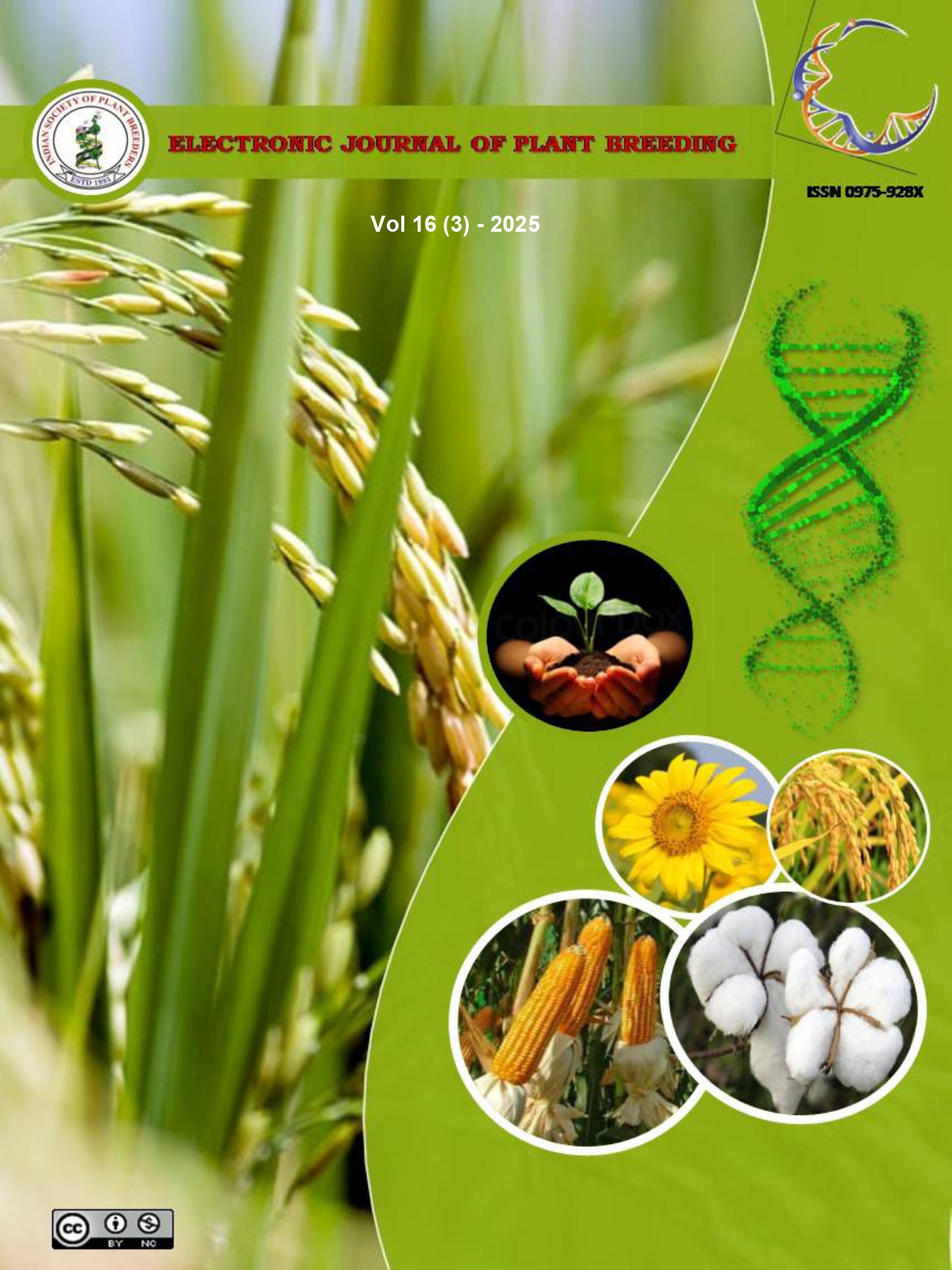Genetic diversity of upland rice genotypes of Nagaland based on root and shoot morphological characteristics
Abstract
Upland rice is a staple food with abundant genetic diversity that needs to be explored and studied. The present study is the first of its kind in the Nagaland region, where 28 upland local genotypes were evaluated for genetic diversity, with special reference to root characteristics. Root dry weight, root fresh weight, root volume, and root-to-shoot ratio were found to significantly contribute to genetic diversity among root traits. In contrast, grain yield per plant, days to 50% flowering, and plant height are key traits responsible for genetic diversity among the shoot traits. Four clusters were formed, among which Cluster-2 and Cluster-4 were the most distinct and Cluster-4 had the maximum number of genotypes. Genotypes Chahashye, Chishoghi, Sulijak , Taposen Youli and Manen (Red) SARS-5 showed greater diversity than the other genotypes. Cluster-1 showed the maximum contribution of one character, i.e., the root length (MRL), and Cluster-2 showed the maximum contribution of four characters, viz. root dry weight, the root–to-shoot ratio, plant height and the number of days to 50% flowering. Cluster 3 showed the maximum contribution of three characteristics viz., number of days to maturity, panicle length, and number of panicles per plant. Cluster 4 showed the maximum contribution of six characteristics, mostly yield-related traits, such as root volume, number of tillers per plant, number of effective spikelet’s per panicle, 1000-grain weight, shoot length, and grain yield per plant. This study revealed that the genotypes in Cluster-4 has the greatest potential and coulsd be exploited through hybridization programs for yield improvement and drought stress breeding.

